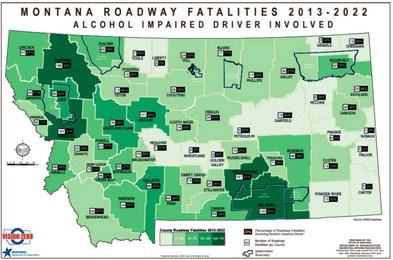Property Taxes Put Governor, Local Government Leaders At Odds
The supplemental property tax bills heading to property owners around the state this spring, made necessary by a November Supreme Court decision, represent a monumental headache for both local tax officials and homeowners.
They also illustrate how the tax issue has driven a wedge between Gov. Greg Gianforte, a Republican seeking re-election this year, and local government leaders across Montana’s political spectrum.
Nearly all of the dollars collected by Montana’s property tax system flow, directly or indirectly, to local government programs like schools, law enforcement and park maintenance. As such, Gianforte has repeatedly argued that rising residential taxes are fundamentally a problem with local government spending, as opposed to anything his state government has done wrong.
“Property taxes are driven by local spending, the schools and local municipalities,” Gianforte said during an appearance on KGVO’s Talk Back program last week. “None of your property tax goes to the state.”
Last year, during a dispute with Gov. Greg Gianforte over the state’s “95 mill” school equalization property tax, officials with 49 of Montana’s 56 counties chose to reduce their fall tax bills against the wishes of the Montana Department of Revenue. This month, after landing on the losing side of a November Montana Supreme Court ruling, those counties’ treasurers are left with the thankless task of sending supplemental property tax bills to hundreds of thousands of property owners across the state.
That position tends to rankle school executives, county commissioners and other local government leaders who generally believe they’re doing a fine job managing their budgets — and who argue that the fundamental fault for taxpayers’ woes lies in the mechanics of the state-level tax code set by the governor and the state Legislature.
Last year, a bipartisan group of county commissioners representing 49 of Montana’s 56 counties launched an intergovernmental tax revolt of sorts, having concluded that the state’s rapid property value growth meant they shouldn’t collect the full value of the state’s “95 mill” school equalization tax. That put them at odds with Gianforte’s revenue department and education advocates, who noted that the state budget had been passed under the assumption that the full amount would be available for a program that subsidizes tax-base-poor districts. (County leaders said the state’s flush General Fund could readily make up the difference.)
The fight tumbled into litigation, where the Montana Supreme Court ultimately sided with the governor, concluding that his administration’s position was consistent with decades of past practice. The ruling ordered counties to collect the full amount but didn’t come until after the initial wave of 2023 tax bills were put in the mail last fall. This spring’s supplemental tax bills — and the accompanying frustration — are the end result.
As they send their supplemental tax bills, many counties are trying to cast the situation as a stymied effort to throw their taxpayers a bone. Suggested language circulated by the Montana Association of Counties for inclusion on the spring notices stresses that the additional collection is coming only because the court ordered it.
At least one county, Gallatin County, is going even further, pointing the finger directly at Gianforte as it tries to explain the situation to its taxpayers. A billing statement received by an MTFP staffer in Bozeman reads, in part: “These additional tax collections mandated by the Governor will be sent to the State of Montana.”
Asked in an interview last week whether he thinks his administration did enough to avoid the current tax mess, Gianforte pointed to the state’s property tax rebates, acknowledging they represent a “temporary solution,” as well as a tax task force he’s established to explore longterm legislative fixes. Specific to the 95 mills situation, the governor also said he believes the state has a “statutory obligation” to collect the full amount.
“I’m always for lower taxes,” Gianforte said, “but we need to fund our schools.”

